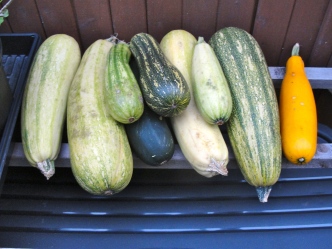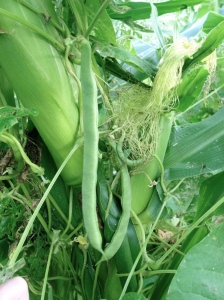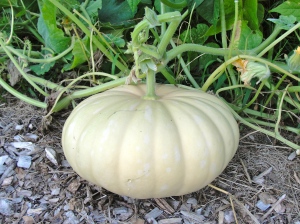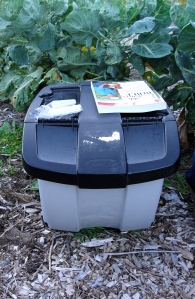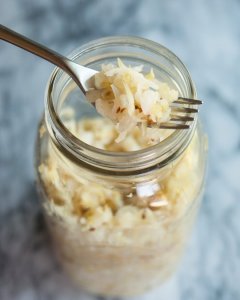Topics:
- Root storage by Lea Scott
- Canning Demo with Denise
Activities:
- Harvesting
- Garden clean-up
- Canning demonstration with Denise at Ethan Allen Homestead

With week 21 coming to an end, it’s clear that fall is on its way, although the weather we’ve been having the past few days says otherwise. As the CTG program begins winding down, we’ve begun discussing the process of readying the gardens for the off-season, as well as methods on how to preserve the last of our harvests. On Monday, Lea Scott returned for yet another visit to impart her knowledge on how to properly store root crops, of which there are many right now! On Wednesday and Thursday, Denise offered more of her invaluable knowledge and experience with canning demos in the Ethan Allen Homestead kitchen, a preservation process that has been widely used for generations.

Canning Demonstration with Denise:

Canning as a means of food preservation dates back as far as 1806 when Nicolas Appert, a French brewer, found that cooked food inside a jar did not spoil unless the seals leaked. His discovery was prompted by an ‘award’ promised by the French government offered to any inventor who could devise a new way of preserving food in order to feed the large armies during the Napoleonic Wars. And you thought canning was just something your mom did…


Both Wednesday and Thursday evenings, the students gathered in the Ethan Allen kitchen to learn the process with the help of Denise, who had prepared a large amount of tomatillo salsa as the ‘experimental canning substance’. With Ball jars in hand, the students worked alongside Denise to first sterilize them in boiling water, fill them with the heated salsa, and then cap and seal them in a hot water bath. Some extremely important tips to take note of when canning is:
- Always sterilize your equipment! Due to the potential threat of Botulism, a serious bacterial disease arising from contaminated canning equipment, it is highly important that the canning jars you use are properly sterilized in a hot water bath. We boiled our jars and lids in separate pots of boiling water for approximately 12 minutes, which is the general rule of thumb for killing any present bacteria.
- Make sure jar rims stay clean during the filling process. If you notice a bit of jam, salsa, etc. on the rim of your jar after filling, clean it off with a wet paper towel. That small bit of food can inhibit the sealing process and thus allow for the canned good to become contaminated or unseal over time.
- Make sure you read up on the boiling times for the specific food you are canning. Different foods and different size canning jars require different amounts of times to properly seal in the hot water bath once the lid is on. The Ball Blue Book of Canning is a great resource for this. Also, you need to consider time differences between using a simple hot water bath versus a pressure canner.

Canning can be used for preserving a variety of garden-fresh ingredients, and there’s always the excitement of opening that ‘can of summer’ in the dead of winter when you’re longing for a taste of the gardening season. Check out the below recipe, which Denise used, to get started on your own canning ventures!
Tomatillo Green Salsa

Ingredients:
- 5 cups chopped tomatillos, roasted
- 1-½ cups seeded, chopped long green chiles (can use poblanos, but reduce amount)
- ½ cup seeded, finely chopped jalapeño peppers
- 4 cups chopped onions
- 1 cup bottled lemon or lime juice
- 6 cloves garlic, finely chopped
- 2 tablespoon ground cumin (optional)
- 2 tablespoons dried oregano leaves (optional)
- 1 tablespoon salt
- 1 teaspoon black pepper
Methods:
- Remove husks of tomatillos, and roast
- Prepare peppers:
- Slit the peppers and use one of the following methods to remove skins (not necessary but they are tough!):
- Oven or broiler method to blister skins – Place chiles in a hot oven (400°F) or broiler for 6 to 8 minutes until skins blister
- Range-top method to blister skins – Cover hot burner (either gas or electric) with heavy wire mesh. Place peppers on burner for several minutes until skins blister.
- To peel, after blistering skins, place peppers in a pan and cover with a damp cloth. (This will make peeling the peppers easier.) Cool several minutes; slip off skins. Discard seeds and chop.
- Slit the peppers and use one of the following methods to remove skins (not necessary but they are tough!):
- Remove seeds of jalapenos
- Combine all ingredients in a large saucepan and stir frequently over high heat until mixture begins to boil, then reduce heat and simmer for 2O minutes, stirring occasionally. Ladle hot into clean, hot pint jars, leaving ½-inch headspace. Remove air bubbles and adjust headspace if needed. Wipe rims of jars with a dampened, clean paper towel; apply two-piece metal canning lids. Process in a boiling water canner according to the recommendations in Table 1.
Note: You may use green tomatoes in this recipe instead of tomatillos.
Source: http://nchfp.uga.edu/how/can_salsa/tomatillo_green_salsa.html

